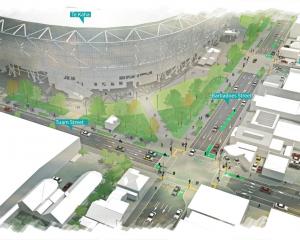
But it wants the Government to make sure pedestrians and wheelchair-users continue to have priority on footpaths.
The government is proposing to let bikes, e-bikes and e-scooters use footpaths at a maximum speed of 15km/h, or three times the walking speed. They would have to give way to pedestrians, and councils could impose lower speeds or put a ban on busy paths.
“Footpaths are not appropriate places for adults on bicycles," said city councillor and urban development and transport committee chairman Mike Davidson.
"We do not want to see, allow or encourage increased numbers of bikes on footpaths and have concerns that the proposed rule change would permit this."
Under one of the rule changes put forward in the New Zealand Transport Agency’s Accessible Streets package bicycles and other transport devices that are no wider than 75cm would be allowed on footpaths, provided they do not exceed a speed of 15km/h.
Davidson says it is important that the rules help protect the most vulnerable road users and that it why the council does not support the proposed change to allow adult cyclists to ride on footpaths.
"We support allowing children up to the age of 13 to cycle on footpaths but we don’t want to open up the footpaths to all adults on bikes.
"Adult caregivers should be allowed to accompany children that are cycling on the footpath but cycling on the footpath shouldn’t become the established norm for adults.’’
In its formal submission on Accessible Streets, the council also says:
- It broadly supports the proposal to create new categories of vehicles and users to better reflect the types of vehicles that are more commonplace on our city streets
- It supports the proposed framework for the use of shared paths and cycle paths.
- It supports the proposal that devices other than cycles should be allowed to use cycle lanes and cycle paths.
- It supports making it mandatory for powered transport devices to have lights and reflectors at night.
- It supports the proposal to implement a minimum overtaking gap for cyclists and recommends the gap is set at 1.5 metres.
- It supports the proposal to increase the safety, convenience and attractiveness for active modes.
“New technologies have changed the way people travel within our city and it has become evident that the existing rules are inconsistent and no longer fit for purpose,’’ said Davidson.
“We believe these proposed new rules are a step in the right direction and will enable the development of a framework to manage the increasing and diverse range of users on our streets and paths.’’
But Davidson says while the rule changes are timely and welcome, they cannot solely be relied upon to effect change.
"Public education and messaging are critical tools in changing behaviour and building a collective understanding about safe and acceptable behaviours on our paths and streets. We want to work with NZTA to effect the change that is needed."













